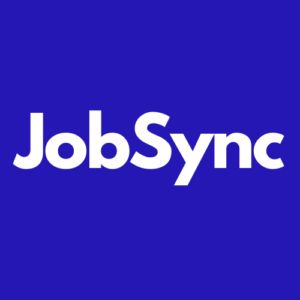
If you clicked through to read this blog post, you likely had at least a small suspicion that, at your company, your apply process isn’t delivering to the level you need it to.
Maybe you’re not getting the volume of candidates you need, even though the job is top-notch and so is your advertisement strategy. Maybe you’re getting plenty of candidates but the best people seem to fall away before they reach the final hurdle. Or perhaps you have the opposite problem—tons of applications, but the candidates are not even close to the qualifications you need.
Either way, you’re beginning to realize that your company’s application process is missing the mark. And you want to know what’s going wrong and how you can fix it.
A spectrum as wide as the Gulf of Mexico
The root of the problem lies in how we define “application” because the reality is, it’s not one thing but many. There’s a broad spectrum of apply processes, and the spectrum exists because what it means to “apply” to a job is different from one company to the next.
For example, some jobs have lots of requirements. They need candidates with a specific education or credential, who hold a certain license, who have the right type of visa, and so on. Companies that hire for these jobs tend—rightly or wrongly—to include a full vetting assessment in their digital application experience so they can check if the candidate matches the job. It can take anywhere from 10 minutes to an hour to complete this type of application.
Meanwhile, another company will need nothing more than a name, email address, and willingness to work, as there are no requirements for the job. Anyone can apply for this job in a few clicks, and in seconds.
It sounds obvious, but these extremes are a big reason why organizations are not getting the results they need from their recruitment advertising. There’s a huge gulf of difference between a one-click apply and a full-assessment apply, both in terms of the volume of candidates it will generate, the quality of those candidates, and whether the candidate pool will stay invested in the job to the end of the recruiting process.
If your application process is on the wrong end of the spectrum for what the job needs, then you’re never going to get the right number of qualified candidates—just a lot of frustration for your overstretched recruiting teams.
Easy Applies are anything but easy
At one end of the spectrum, you have the ‘Easy Apply’ process offered by platforms like Indeed and LinkedIn. Easy Apply goes by various names but the main thrust is that a candidate can initiate an application directly from the platform they are currently viewing to conduct their job search. And they can do so in a couple of clicks, using basic information like their name and contact details which they’ve already supplied to the job board or job site.
For candidates, applying for jobs can be exhausting, so an Easy Apply opportunity might seem like a dream come true. Today’s candidates are consumers, and they want quick and easy processes, Amazon-style, where everything happens in one place. The magic Easy Apply button delivers that experience, removing all the pain of coming off the job board or job site, loading a new webpage, creating (yet another) account, uploading a resume, filling out a form, blah blah blah for every job they’re interested in. It’s the definition of Apply + Go.
In theory, recruiters should also feel the benefit of Easy Applies. The whole point of them is to remove the friction from the application process. The easier it is to apply for a job, the more people will think, “Why not?” and hit the “Apply”– driving the volume that employers are struggling to get.
It’s a win-win situation, right?
Yet, for many recruiters, the knock-on effects of Easy Apply are pretty grim:
-
An Easy Application gives the recruiter just the basics of a name and masked email address. They do not receive nearly enough information to be discerning about who they reach out to. In fact, the application is so overly simplified that it’s better described as a lead, not an application.
-
To convert these leads into applicants, recruiters first have to move the information from wherever it’s landed – likely an email box – into their ATS. They then have to dig through piles of applications, research them, make phone calls, and maybe even get the candidate to apply again for the same job on the ATS. That’s a lot of manual work for a process that’s designed to be one-click.
-
In the meantime, those same candidates are still applying for jobs. There’s a high risk you’ll lose them if you don’t process their application quickly enough—thus defeating the main benefit of Easy Applies, which is to get easy volume.
Your long apply is losing you applicants
Now let’s move to the other end of the spectrum. Here you take your candidates away from the job board or job site and onto your ATS, where you ask all the questions you need from candidates to make a sound and insightful hiring decision.
Full applications are common in three scenarios: the job legitimately is very complex and requires the type of vetting only possible via a full application (like a nuclear scientist), recruiting teams are so overwhelmed with applications that they’re trying to screen out unqualified candidates up front, or the company is subject to various regulatory requirements whereby candidates must complete a specific process, answer specific questions or capture data in a specific system. It makes sense to do this through screening questions embedded in the digital application experience as it’s faster than if the recruiter has to call and manually vet each candidate.
So far, so good. Yet, for most recruiters, this picture looks equally grim:
-
Long application processes are alienating for candidates and create a huge barrier to entry. People don’t want to take the time to fill out every single field—leading many to just move on.
-
The process to get to the long application is grueling in and of itself – click apply, click apply, click apply yet again, now create an account, and provide all of your top-level details, again. The process itself contributes to the lengthy application process.
-
When applicants drop out of the process, key recruiting metrics suffer. High abandonment means conversion rates go down, the cost per application goes up, and it’s also going to increase your time-to-fill.
-
Abandonment hurts your quality of hire, too, since the people that stay in the funnel are those who are extraordinarily focused on your brand and willing to go through anything to land a job with you. This might work if you have the gravitational pull of Google, Oracle, or Microsoft but for everyone else, there’s a risk that you’ll be left with the last person standing, not the best fit for the job.
Is there a “just right” option?
When you enter the “Goldilocks Zone,” everyone wins. This is the sweet spot where you maximize the number of candidates you get via direct job site applies AND get the screening questions your business needs answered so you can quickly make decisions about your next step. And do so while removing the pitfalls of both approaches.
Where does the Goldilocks Zone sit on the application spectrum?
Surprisingly not in the middle—it’s closer to an Easy Apply, but with job-level questions integrated, delivered straight to your ATS. We call this a “Native Apply” and the TL;DR (too long; didn’t read) is that it removes all unnecessary roadblocks that create friction in the application flow—for both recruiters and candidates.
If you’ve tried Easy Apply in the past but failed to get the results you need, then Native Apply could be your answer.
Our next article will take a deeper dive into Native Apply and what it could mean for your organization’s hiring process. Stay tuned!


